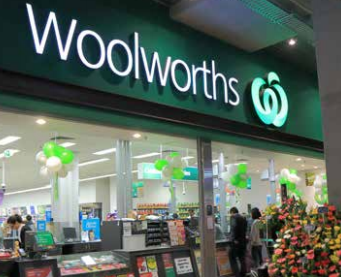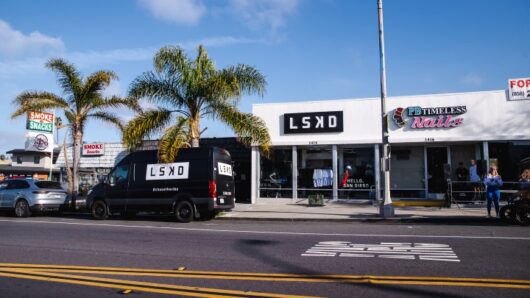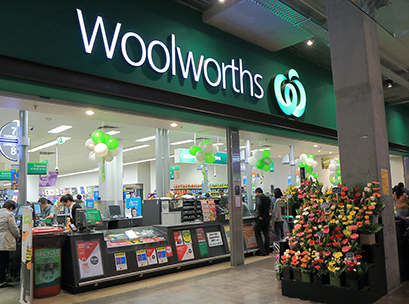 Anticipating the bottom line results for FY16 for Woolworths, Wesfarmers, Myer and Super Retail Group.
Anticipating the bottom line results for FY16 for Woolworths, Wesfarmers, Myer and Super Retail Group.
The bottom line result for the current financial year for both Woolworths and Wesfarmers will be hit by substantial writedowns on their ailing businesses.
While their writedowns will be the headline grabbers, it is also likely that a number of other retailers are forced to make provisions in their accounts for restructuring programs.
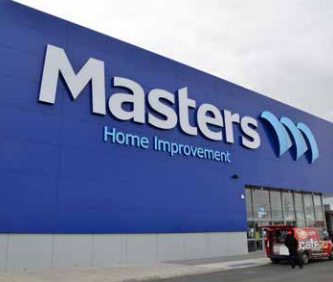 Woolworths posted a $1.9 billion post tax impairment on the Masters Home Improvement chain for the first half of this financial year, but faces the prospect of further provisions for the second half.
Woolworths posted a $1.9 billion post tax impairment on the Masters Home Improvement chain for the first half of this financial year, but faces the prospect of further provisions for the second half.
Woolworths has yet to reach an agreement with Lowes on the buyout value of the one-third holding the US retailer has in the failed hardware venture, and the delay in reaching that agreement is extending trading losses and eroding the value of the Home Timber & Hardware chain.
With restructuring costs for the struggling Big W discount department store chain and further costs associated with programs to reinvigorate its supermarket business, Woolworths seems certain to make further provisions to its full-year accounts.
Announcing its third quarter trading results on May 3, Brad Banducci, Woolworths CEO, said the retailer was in the first year of a, “three to five year journey” to restore sales momentum and was reviewing all aspects of its business.
The retailer said it was too early to quantify the financial impact of actions that would be undertaken as a result of the review, but more writedowns are anticipated.
Apart from extraordinary provisions in the accounts, Woolworths is surrendering profit growth by reinvesting a further $150 million in price, customer service and loyalty in the current half.
The retailer has already reinvested around $500 million a year in price reductions in a bid to rebuild sales momentum in its sluggish supermarket business.
Banducci said Woolworths is undertaking significant cost reductions in its Big W business to improve base profitability, while restructuring the business to build up direct sourcing and design capabilities to, “ensure that new ranges resonate with customers”.
Woolworths is expecting to book a full-year loss in the Big W chain as a result of restructuring initiatives and clearance of “unproductive” summer and winter season merchandise.
Bigger losses loom for Masters Home Improvement as Woolworths is unable to clinically exit the business until it resolves the impasse with Lowes over the value of its joint venture partner’s one-third stake.
Masters Home Improvement sales are tapering off without new store openings, and with discounted stock clearances and independent retailers in the Home Timber & Hardware chain are defecting, some to rival retail banner Mitre 10, but some to other hardware groups.
While there is interest from several suitors, including Bunnings and the private equity firm Blackstone, in the Masters Home Improvement property holdings, the value of the sites will depend on planning restrictions on potential uses.
The 2016 full financial year results will be the gloomiest for Woolworths in more than two decades, but Banducci and his new management team will be keen to clear the decks this year.
Wesfarmers’ writedowns
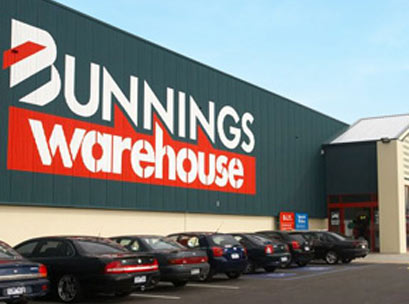 Wesfarmers will not be quite so bruised come the end of this financial year, with its Coles supermarkets, Bunnings, Officeworks and Kmart chains all trading well and increasing earnings.
Wesfarmers will not be quite so bruised come the end of this financial year, with its Coles supermarkets, Bunnings, Officeworks and Kmart chains all trading well and increasing earnings.
However, Wesfarmers has announced it will writedown a non-cash impairment of between $1 billion and $1.3 billion on the book value of its Target discount department store chain.
Target was the best-performed business in the Coles Group when it was acquired by Wesfarmers in 2007, but the poor recent performance of the chain has prompted the writedown on its historic goodwill value.
Wesfarmers will also book a forecast $145 million charge against its full-year accounts for restructuring costs and other provisions on Target, including stock clearances.
Target is expected to post a trading loss of about $50 million on top of the $145 million provision for extraordinary items related to the restructuring.
Richard Goyder, Wesfarmers MD, said “decisive steps” are being taken to reduce the cost base and reset Target to create a stronger platform for the future following a comprehensive review of all aspects of the discount department store chain.
Goyder said Target had made operational progress in recent years, but market competition and disruption had continued to accelerate with the chain’s performance impacted by that of ts stablemate, Kmart.
Goyder said the decision to create a new department stores division would ensure the business has the best foundation possible on which to build future success.
He said Guy Russo, Kmart’s MD, who now heads the new division, has completed a detailed assessment of the business and its opportunities and has begun revising strategic plans, which will include property co-ordination.
Goyder said that the non-cash impairment on Target was more than offset by enhanced goodwill values in the other chains acquired with Coles Group, but accounting standards did not allow Wesfarmers to recognise those gains to counterbalance the Target goodwill writedown.
 Ahead of the restructuring of the Target business, the chain actually lifted sales by 2.3 per cent, to $678 million, for the third quarter. Comparable sales were up 1.4 per cent, however an adjustment for the timing of Easter yielded a 0.8 per cent fall in the quarter on like for like sales.
Ahead of the restructuring of the Target business, the chain actually lifted sales by 2.3 per cent, to $678 million, for the third quarter. Comparable sales were up 1.4 per cent, however an adjustment for the timing of Easter yielded a 0.8 per cent fall in the quarter on like for like sales.
Russo said declining sales momentum, including poorer than expected sell-through of some summer lines, had resulted in targeted clearance activity late in the quarter that had affected sales and margins.
Russo said higher clearance activity is expected in the fourth quarter with further risk in relation to winter categories.
‘New Myer’ strategy bearing fruit
While the two retail heavyweights will book massive writedowns for the 2016 financial year, other retailers are also likely to make provisions in their accounts as part of their restructuring programs.
Myer is expected to book pre-tax implementation costs associated with its transition strategy in the range of $20 million to $30 million for the current financial year.
Myer has announced the closure of stores in Wollongong and Orange in New South Wales as part of its strategy to deliver, “a sharper and more focused offer, and improve productivity across the entire business”.
Richard Umbers, Myer CEO and MD, said the retailer is reshaping its store network to better align with primary customers as an essential part of its strategy to return Myer to profitable growth.
Despite store closures, Myer has lifted sales, with the third quarter result to April 23rd achieving a 2.1 per cent increase to $675.5 million, a 3.4 per cent gain on comparable store sales.
Myer has improved productivity in its stores, lifting sales per square metre by 5.1 per cent in the third quarter and 4.4 per cent for the year to date.
Umbers said the 2016 financial year is a transitional year in which significant investments are being made in Myer’s future growth.
Umbers said the accelerated rollout of initiatives would increase costs and capital expenditure, but the underlying net trading result was expected to be $66 million to $72 million, excluding the impact of implementation costs from Umbers’ ‘New Myer’ strategy.
 Super Retail Group’s up and downs
Super Retail Group’s up and downs
Super Retail Group plans to go head to head with Kathmandu in the $2.2 billion outdoor leisure market by turning Ray’s Outdoors into a shopping destination for campers, hikers and adventurers.
After a strategic review lasting more than 18 months, Super Retail Group has finally signed off on a new concept that will return Rays Outdoors to profitability and boost earnings from its leisure division by $8 million a year.
Super Retail Group has also indicated it will make a further provision in its 2016 financial year accounts for the struggling Ray’s Outdoors chain it acquired for $54 million in 2010.
Super Retail Group has been one of the more successful listed retailers over the past decade, powered by its Supercheap Auto chain, the Boating Camping and Fishing (BCF) concept it developed from scratch, and the Rebel Sports chain it acquired from private equity owners.
Rebel Sport has contributed strongly to sales and earnings growth since it was acquired in 2011, but Super Retail Group has had much less success with three other acquisitions, Goldcross Cycles, Workout World and Rays Outdoors.
Super Retail Group expects to book restructuring costs and writedowns of around $38 million, including $19 million in property commitments, $13 million in non-cash fixed asset write-offs and $6 million in other transformation costs as it attempts to lift the performance of the Ray’s Outdoors stores.
The one-off costs, which include $28.5 million in cash costs and $14.5 million in non-cash charges and writedowns, will hit Super Retail Group’s earnings.
The writedowns come on top of a $20 million impairment included in the December half accounts.
Super Retail Group is hard at work on it its new store concept for Rays Outdoors, but it could also convert up to 15 stores to the BCF brand and possibly either close or relocate more than 20 stores as part of its ongoing transformation strategy.
The five Rays stores already converted to the new concept, which is more female friendly, are generating positive sales growth. But disappointing sales from older style stores are expected to result in losses for the current financial year for the chain.
Super Retail Group will also book a $5 million provision on another business in which it has a 95 per cent stake.
Peter Birtles, Super Retail Group CEO and managing director, has revealed that unprofitable contracts with sporting bodies and clubs entered into by Infinite Retail, an online sports merchandise business, combined with integration costs, would lead to earnings before interest and tax losses and restructuring costs of $5 million.
Access exclusive analysis, locked news and reports with Inside Retail Weekly. Subscribe today and get our premium print publication delivered to your door every week.

